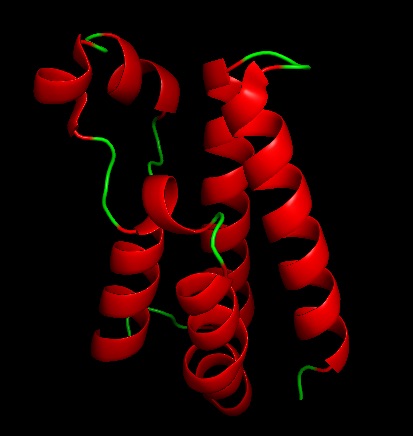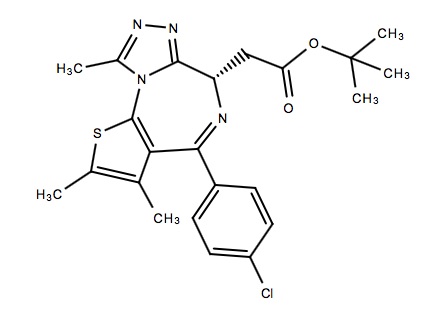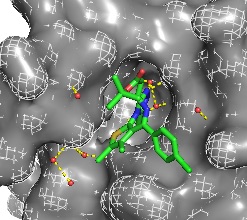User:Elisha Lacey/Sandbox 1
From Proteopedia
Contents |
Bromodomain testis specific
| |||||||||||
Function
Bromodomain testis specific is a monomer that is only fully functional as a dimer. BRDT is a transcriptional regulator, located in the nucleus, for gene expression during spermatogenesis. BRDT is important to healthy progeny, without it sperm is unable to correctly compact the genome. BRDT gives rise to the shape of sperm cells, without it the sperm cells are misshapen. BRDT is acting on epigenetic by affecting the histones through binding to acetylate lysine. BRDT also helps in splicing the genome in the testis. BRDT interacts with Smarcel which is involved in nucleosome remodeling.
BRDT and fertility
Loss of one of the bromodomains or even single point mutations leads to decrease spermatogenesis and defective sperm. If both bromodomains are knocked out it leads to a loss of fertility. When looking at the effect of non functional BRDT it becomes visible when the spermatids elongate during meiosis. These spermatids were shorter in length then their properly formed counter parts and lack the hook present in normal spermatids at this stage. It is important to note with one defective BRDT it is still possible to create progeny.
Relevance
Male contraception has been eluding scientists for years and is a desired area to prevent unplanned pregnancies. In studies of an anti-cancer drug triazolotheinodiaepine known as JQ1 that inhibits BRD4 in cancer pathogenesis and was studied on it's effects on BRDT. In experiments in mice it is seen, due to structural similarities, JQ1 blocks the production of sperm in testes. The binding of JQ1 in the acetyl-lysine pocket prevents recognition of acetylated histone H4KAC4. JQ1, in studies, is not seen to affect hormone levels(leutinizing hormone. follicle stimulating hormone, testosterone), mating behaviors or harmful effects to eventual offspring. Since there is not an effect on hormone levels the males treated are expected to be just as active as their non-treated counter parts but without spermatocytes. Also JQ1 is not seen to cause sterility in mice. The effects of JQ1 on fertility are reversible, dose and time dependent effects on fertility. In mice it reduces size of testis, seminiferous tubes, and number of spermatozoa as well as the mobility of spermatozoa.
Figure 2:Chemical drug. This is a chemical representation of the JQ1 molecule, designed using chemdraw, which was designed to be a treatment for cancer inhibiting MYC oncogenes.
Figure 3: Binding pocket. This image is a surface representation of BRDT with JQ1 in the binding pocket to see how JQ1 fits into the binding pocket. The grey is representing the surface structure and the green is the ligand. The red dots are water molecules and the yellow dashed lines are hydrogen bonds.
Analysis of Structure
The functional unit for BRDT is two bromodomain motifs, each monomer is composed of 4 anti-parallel alpha helixes. The 2 monomers are not unique to one another. At the end of the helix bundles is the acetylated-lysine binding site binding site. They have two N' terminal bromodomains and C' terminal extra terminal domains. BRDT belongs to the histone acetyltransferase superfamily. BRDT is tissue restricted to the testis. BRDT activates the histones by hyper acetylation at the promoter of genes leading to condensed acetylated chromatin of a haploid spermatid. Running an alignment gives 200 sequence similarities which shows that this sequence is highly conserved among organism in the phylogenic tree. This was also seen when running multiple alignments and the sequence was similar among several different organisms.
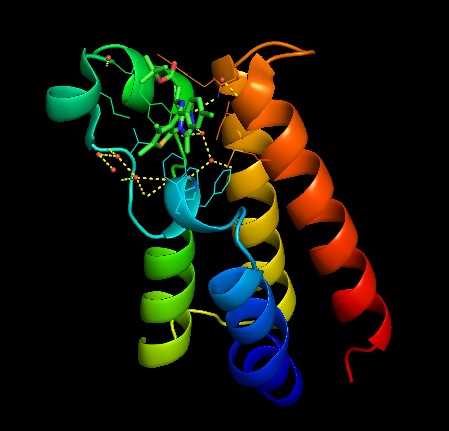 Figure 4: Site action. This image is a the BRDT monomer with ligand bound to visual the binding pocket present in the monomers the green in the molecule is JQ1.
Figure 4: Site action. This image is a the BRDT monomer with ligand bound to visual the binding pocket present in the monomers the green in the molecule is JQ1.
Analysis of related Sequences
Bromodomain testis specific in humans shares 97% sequence identity with bromodomain testis specific in Sumatran Orangutans. It also shows 99% sequence similarity. These genes are close orthologs with such similar sequence identity and they both serve a function in fertility. The most distant sequence alignment is a black flying fox with and identity of 89% and still is an ortholog to BRDT in humans. Looking at an alignment comparison of BRDT and 16 other proteins the representation shows a sequence match of the alpha helixes and the non aligned segments as being random coils connecting the helices.
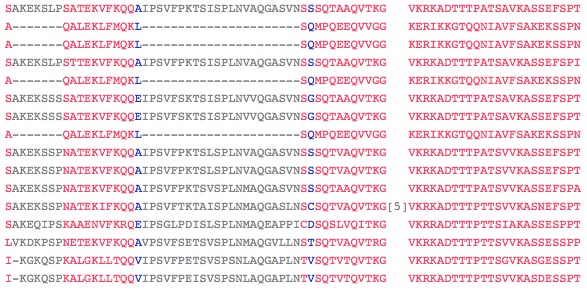 Figure 5:Alignment. This image above is just a short segment of aligned sequence to illustrate the sequence similar regions, going down the rows are different sources of DNA in the phylogenic tree. In red are the aligning codes and in grey are the non match sequences. The image was included to illustrate a part of the conserved sequence among orthologs.
Figure 5:Alignment. This image above is just a short segment of aligned sequence to illustrate the sequence similar regions, going down the rows are different sources of DNA in the phylogenic tree. In red are the aligning codes and in grey are the non match sequences. The image was included to illustrate a part of the conserved sequence among orthologs.
Evolution of BRDT
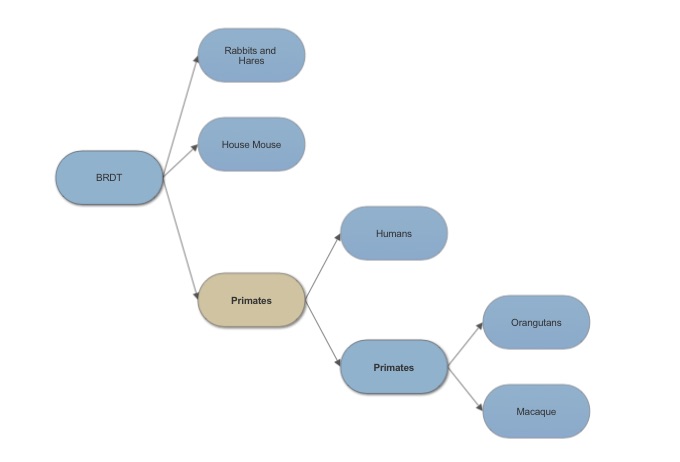 Figure 6: Evolutionary tree. This figure is a diagram of BRDT through evolution. The information in the digram is from Blast.
Figure 6: Evolutionary tree. This figure is a diagram of BRDT through evolution. The information in the digram is from Blast.
Looking at the evolution of BRDT it is easy to see why mice are a choice of animal model for assessing fertility affects due to BRDT.
References
PDB ID:4FLP
http://dx.doi.org/10.2210/pdb4flp/pdb
Berkovits B, Wolgemuth D. The first bromodomain of the testis-specific double bromodomain protein Brdt is required for chromocenter organization that is modulated by genetic background. PMC. 2011 Dec 15: 360 (2):358-368.
Berkovits BD, Wang L, Guarnieri P, Wolgemuth DJ. The testis-specific double bromodomain-containing protein BRDT forms a complex with multiple spliceosome components and is required for mRNA splicing and 3′-UTR truncation in round spermatids. Nucleic Acids Research. 2012 May 8;40(15):7162-7175.
Barda S, Yogev L, Paz G, et al. BRDT gene sequence in human testicular pathologies and the implication of its single nucleotide polymorphism (rs3088232) on fertility. Andrology. 2014 May 28; 2(4): 641-647.
Dhar S, Thota A, Rao MRS. Insights into Role of Bromodomain, Testis-specific (Brdt) in Acetylated Histone H4-dependent Chromatin Remodeling in Mammalian Spermiogenesis. The Journal of Biological Chemistry. 2012;287(9):6387-6405.
Enyuan Shang, Helen D. Nickerson, Duancheng Wen, Xiangyuan Wang, Debra J. Wolgemuth.The first bromodomain of Brdt, a testis-specific member of the BET sub-family of double-bromodomain-containing proteins, is essential for male germ cell differentiation Development 2007: 134: 3507-3515.
H.M. Berman, J. Westbrook, Z. Feng, G. Gilliland, T.N. Bhat, H. Weissig, I.N. Shindyalov, P.E. Bourne (2000) The Protein Data Bank Nucleic Acids Research, 28: 235-242.
Madden T. The BLAST Sequence Analysis Tool. 2002 Oct 9 [Updated 2003 Aug 13]. In: McEntyre J, Ostell J, editors. The NCBI Handbook [Internet]. Bethesda (MD): National Center for Biotechnology Information (US); 2002-. Chapter 16. Available from: http://www.ncbi.nlm.nih.gov/books/NBK21097/
Zdrojewicz Z, Konieczyn R, Papier P, Szten F.Brdt Bromodomains Inhibitors and Other Modern Means of Male Contraception. ACEM. 2015 Feb 23; 24(4):705-714.
